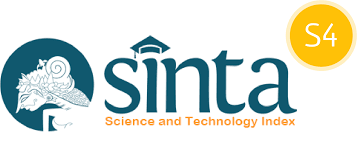Sistem Keamanan Server Linux CentOS Dengan Metode Port Knock dan RST Cookies
DOI:
https://doi.org/10.29408/jit.v6i2.17500Keywords:
Server Security, Linux CentOS, Port Knock, RST CookiesAbstract
The increase in online-based services makes a security system for server computers increasingly needed. A server computer is a device that must always be available to be accessed anytime and anywhere. Some of the security systems needed for server computers include security for ssh port access for remote server access needs and a security system to protect servers from Denial of Service (DoS) attacks which can make the server down and completely inaccessible. In this study, a security system is proposed for a server computer with the Linux CentOS operating system on a port 22 secure shell(ssh) access system using the port knock method and a security system to prevent Denial of Service (DoS) attacks on server computers using the RST Cookies method. The simulation results from the port 22 Secure Shell (SSH) access experiment for the server computer can work well where port 22 Secure Shell(SSH) will remain closed and cannot be accessed carelessly except by accessing several ports first according to predefined port knocking rules. Likewise, the implementation of a security system with the RST Cookies method works very well to prevent Denial of Service (DoS) attacks and can still keep the server accessible with a good response time of under 1 ms
References
G.J Simson, dan gene Spafford, Practical UNIX & Internet Security, O’Reilly & Associates, Inc,2nd edition, 1996.
William Stallings, Network and Internetwork Security, Prentice Hall, 1995.
Ramli Ahmad, Bq Andriska Candra, Amri Muliawan Nur, “Penggunaan Metode Backpropagation Pada Jaringan Syaraf Tiruan Untuk Intrusion Detection System”, Infotek : Jurnal Informatika dan Teknologi, Vol. 3 No. 2, Juli 2020.
Suhartini, dkk, “Implentasi Aplikasi Ujian Online Berbasis Client Server Studi Kasus di SMA Negeri 3 Selong”, Infotek : Jurnal Informatika dan Teknologi, Vol. 5 No. 1, Januari 2022.
Budi Rahardjo, Keamanan Sistem Informasi: Keamanan di Internet, Seminar Informasi Infrastruktur Nasional, ITB, 1997.
Khadafi S. dkk, “Implementasi Firewall dan Port Knocking Sebagai Keamanan Data Transfer Pada FTP Server Berbasis Linux Ubuntu Server”, Jurnal Ilmiah Nero, Vol. 4 No. 3, 2019.
Brades T. dkk, “Prmanfaatan Metode Port Knocking dan Blocking Untuk Keamanan Jaringan BPKAD Provinsi Sumsel”, Artikel Ilmu Komputer, Vol. 3 No. 2, 2022.
A, Saputro dkk, “Metode Demilitarized dan Port Knocking Untuk Keamanan Jaringan Komputer”, CyberSecurity dan Forensik Digital, Vol. 3, No. 2, h. 22-27, 2020.
Fahmi Fachri, “Optimasi Keamanan Web Server Terhadap Serangan Brute-Force Menggunakan Penetration Testing”, Jurnal Teknologi Informasi dan Ilmu Komputer (JTIIK), Vol. 10, No. 1, Februari 2023.
Molavi Arman, Nur Rachmat, “Implementasi Sistem Keamanan Web Server Menggunakan PFSense”, Jusikom : Jurnal Sistem Komputer Musirawas, Vol 05 No 01 Juni 2020.
Edy Haryanto, Widyawan, Dani Adhipta, “Meningkatkan Keamanan Port Knocking Dengan Kombinasi Special Features ICMP, Source Port, dan Tunneling”, Seminar Riset Teknologi Informasi (SRITI), 2016.
P. Ferguson and D. Senie. Network Ingress Filtering: Defeating Denial of Service Attacks which employ IPSource Address Spoofing. RFC 2827 (Best Current Practice), May 2000.
Jonathan Lemon et al. Resisting SYN Flood DoS Attackswith a SYN Cache. BSDCon, 2002.
XiaoFeng Wang and Michael K Reiter. Defending against denial-of-service attacks with puzzle auctions. In Security and Privacy. IEEE, 2003
W. Eddy. TCP SYN Flooding Attacks and Common Mitigations. RFC 4987 (Informational), August 2007
Downloads
Published
How to Cite
Issue
Section
License
Semua tulisan pada jurnal ini menjadi tanggung jawab penuh penulis. Jurnal Infotek memberikan akses terbuka terhadap siapapun agar informasi dan temuan pada artikel tersebut bermanfaat bagi semua orang. Jurnal Infotek ini dapat diakses dan diunduh secara gratis, tanpa dipungut biaya sesuai dengan lisense creative commons yang digunakan.
Jurnal Infotek is licensed under a Creative Commons Attribution 4.0 International License.
Statistik Pengunjung




